All about terrarium rugs
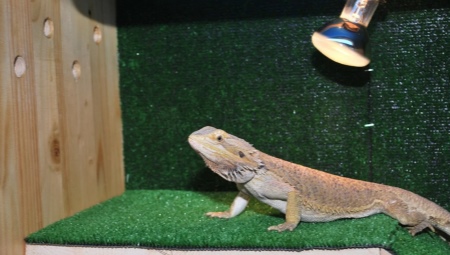
Each reptile species has its own preference for humidity and temperature environments. When choosing a rug, this should be taken into account. In some cases, heated coatings are appropriate. At high humidity, an artificial turf is selected, it saves from the appearance of fungal colonies. In the article, we will talk about the types of rugs for terrariums, about the best manufacturers of goods of this type, and also talk about how to use the products.
general description
Standard terrariums are basic equipment for maintaining the life of reptiles at home. In the warm season, the minimum equipment is sufficient. However, in winter, the animal begins to behave unusually, becomes passive, moves little, eats poorly. Hence, he lacks warmth. In such cases, it is appropriate to supplement the terrarium with a thermal mat, it will raise the temperature to the standards required by its inhabitants.
If heating is done with other equipment, ordinary bedding and rugs are purchased for the animals. They can serve as a bottom coating in their pure form or become the basis for soil (sawdust, sand, gravel, expanded clay, soil mixture, coconut chips).
Correctly selected rugs give reptiles the ability to easily move along the bottom, help during molting, and regulate the temperature regime. Each product performs its own function, therefore, when choosing, you should take into account which reptiles the rug is purchased for and what microclimate is maintained in the terrarium.

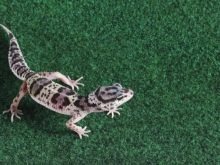
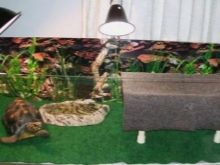
Views
By and large, there are 2 types of rugs used for terrariums: artificial turf and various modifications of heated products. The rest of the varieties are poorly represented on the market.
Thermal mat
Manufacturers produce a wide range of these products. On sale you can find heating decorative products with a thermostat. All models can be divided into the following varieties.
- Bottom heating mats. They are laid under the terrarium, warm the ground and are necessary for snakes and lizards. Suitable for habitats with dry microclimate. If the bottom is heated in humid conditions, the heated wet air will rise up and leave with the heat. With bottom heating, it is difficult to maintain a humid environment.
- General heating. For general heating, thermal mats are used with special fasteners that can hold them on the side walls of the terrarium.
Such products are suitable for domestic reptiles living in a humid microclimate.

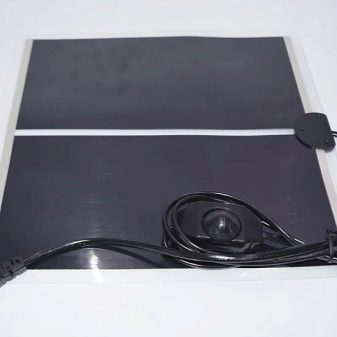
Artificial turf
The mat, imitating green grass, is made of polypropylene. It is acquired by reptiles that do not bury themselves in the ground: many snakes, lizards, iguanas, banana eaters, chameleons. Artificial turf has proven itself well in habitats with a damp microclimate, as it does not collect fungus and mold.
The pile height of such rugs can vary from 2 to 50 mm. The longer the villi, the softer the reptile litter will be. Artificial grass combines well with other types of soil: pebbles, wood, pebbles. It is easier for snakes to shed on green rugs, there is something to catch on to. But removing such bedding is problematic, because cleaning the litter between the pile is not easy.
In addition to thermal mats and artificial turf, there are other types of terrarium coverings, such as a substrate mat. It has a high absorbency, although it is made of non-woven material. Natural flooring includes rugs made of sphagnum (marsh moss). They perfectly absorb and release moisture.
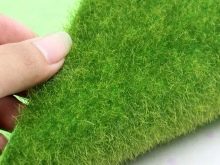

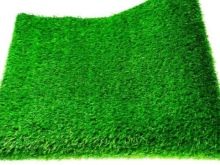
Top manufacturers
Manufacturers offer a wide range of their products. We studied consumer reviews and prepared a list of the most popular ones.
- Avand. The Avand Tropicana Terrarium Artificial Turf Mat from Avand is made of polypropylene. The product measures 85x29 cm and looks attractive in the form of fresh green grass.
- REPTI-ZOO. The company produces different types of rugs. The most popular is the EC02 substrate mat. Made of non-woven fabric, absorbs moisture well, washes easily, suitable for any terrariums. Various models of heating mats have also proven themselves excellent. They are installed under the bottom of the terrarium (outside).
- Laguna. The artificial grass cover (25x25 cm), 3 cm high, is made of soft plastic. Has a pleasant shade, beautiful natural appearance.
- Exo Terra. Heating mats with heating from the manufacturer Exo Terra are intended for dry terrariums of the desert type with reptiles and spiders.
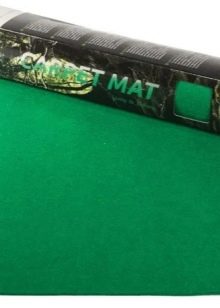


Operating tips
Thermal mats should be installed and connected according to the instructions. They are safe, fires occur extremely rarely and only through the fault of the owner. Manufacturers recommend leaving a few millimeters between the mat and the glass for ventilation to prevent overheating.
As for the artificial turf, it is extremely easy to operate it. The correct size of the mat should be selected and placed on the bottom of the terrarium. If it's time to clean, the product can be easily removed and washed.










